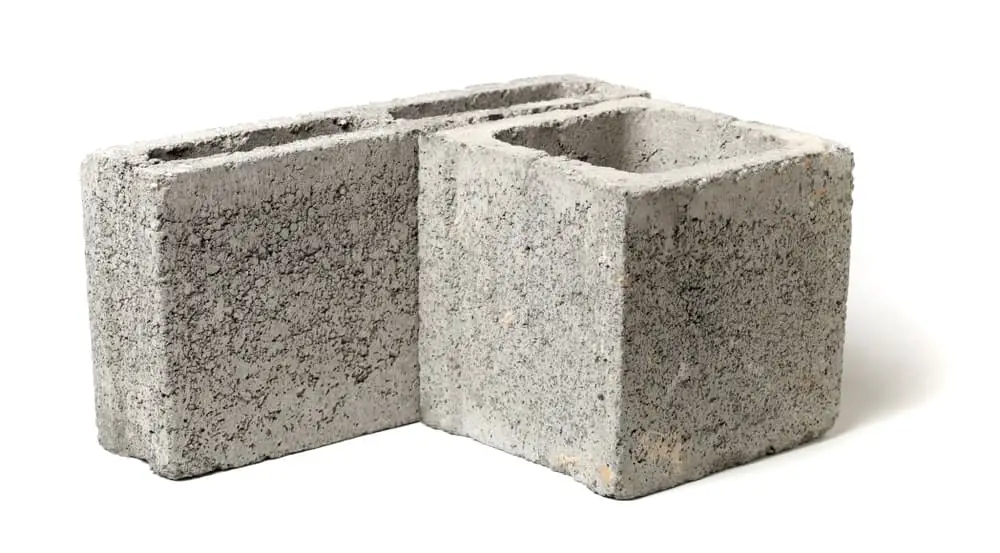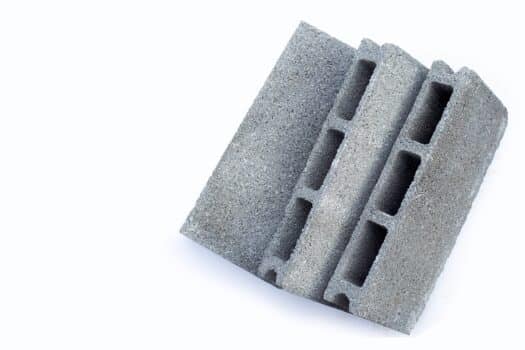
The 5 Cinder Block Dimensions | All You Need to Know
Thousands of cinder blocks used in various construction projects have undoubtedly been observed by you. As fundamental building blocks, these cinder bricks are frequently employed.
Depending on your demands, you can select any of these cinder blocks from a range of sizes and dimensions. Choosing the proper cinder block dimension can thus be a difficult and stressful undertaking for any construction project.
Although they can have a wide range in size, cinder blocks are generally the same size. According to the ASTM standard, cinder block sizes can also vary. We’re here to assist you gain a better understanding of the various cinder block dimensions and their numerous uses in different types of construction projects.
We hope that this information will assist you in selecting the ideal cinder block size for your domestic project. So let’s get started without wasting any more time!

What Are Cinder Blocks?
Construction blocks composed of cinder are frequently referred to as cinder blocks. These are common building blocks in all construction projects; they are concrete masonry units. Bottom ash, fly ash, coal dust, and other fine ash particles produced during the burning of coal are acceptable cinder ingredients for cinder blocks.
This component aggregate is the main distinction between cement/concrete blocks and cinder blocks. In contrast to cement and concrete bricks, cinder blocks contain an aggregate ingredient. The aggregate is combined with cement and sand to produce these cinder blocks, which are hollow concrete masonry units.
What Are Cinder Block Dimensions?
As previously stated, cinder blocks are available in a variety of sizes that are measured in concrete masonry units (CMU). Most cinder blocks can be measured for their real size by their depth, which includes the wall’s thickness. The cinder block is 4-inches broad if the dimension is 4-inches.
Additionally, the height, width, and length of any rectangular block of a specified size are used to describe the block’s total dimensions. The majority of cinder blocks have conventional dimensions of 16x8x8, including the thickness of the mortar.
The real measures of the cinder blocks are 38 inch smaller than their standard size if the thickness of the mortar joints is disregarded. As a result, the mortar joints are typically 3/8 inch thick, adding to the regular cinder block size.
Cinder blocks come in a variety of forms and sizes in addition to their regular size, making them suitable for use in a range of construction projects. However, the most often utilized cinder block size in any significant construction job is the standard size.
Different Cinder Block Dimensions
There are many measurements for cinder blocks that you may take into account when selecting the best ones for your construction project. We’ll talk about the most typical cinder block dimensions in this part. Let’s look at it now!
1. 4-inch Cinder Blocks
Cinder blocks’ 4-inch breadth serves as a representation of their 4-inch measurement. If we take into account the nominal sizes of the cinder blocks, the length can range from 8 to 16 inches while the breath often falls between 4 and 8 inches.
The cinder blocks might be either a solid pier or a hollow pier in terms of shape. Therefore, it is best to take the shape of the cinder blocks for your project into account when selecting the 4-inch size. In addition, you may estimate the quantity of cinder blocks you’ll require by dividing their nominal size by their real size.
2. 6-inch Cinder Blocks
6 inches broad, 8 inches high, and 16 inches long describe a full cinder block. Their dimensions are 6x8x16 inches, which correspond to their breadth, height, and length, respectively. They will actually be 38 inches less in size, leaving enough for the mortar joints to be joined.
The length of the cinder blocks is 8 inches, but they are also offered in a 6-inch half-size with the same width and height. There are several different designs of 6-inch full and half cinder blocks, including the solid pier, hollow pier, hollow stretcher, hollow corner slash, solid corner sash, and 45-degree angle.
The hollow slash and corner slash cinder bricks also have ends that are indented. So, the 6-inch dimension offers a greater selection of cinder blocks.
3. 8-inch Cinder Blocks
The two most common CMU sizes for 8-inch cinder blocks are 8-inch complete and 8-inch half. The 8-inch full-size CMU or cinder blocks are 16 inches long, 8 inches wide, and 8 inches tall. Based on their width, height, and length, the nominal dimensions are given as 8 inches by 8 inches by 16 inches.
Their real dimensions, however, are different from their nominal ones since the width is 38 inch smaller than it should be to accommodate the mortar joint. Additionally, the length of the 8-inch full and 8-inch half cinder blocks is the only distinction between them. The length of the 8-inch half CMU is 8 inches rather than 16 inches.
As a result, for the half and full dimensions, the nominal sizes as well as the actual sizes vary.
4. 10-inch Cinder Blocks
The 10-inch cinder blocks come in two nominal sizes, 10-inch half and 10-inch full, much like the 8-inch blocks do. The 10-inch half-cinder block’s nominal dimensions are 10 inches by 8 inches by 8 inches.
Again, the only difference between the 10-inch whole and half cinder blocks is their length. The 10-inch half is 8 inches long rather than the 10-inch full-size CMU’s 16 inches.
The 10-inch comes in a variety of shapes for both the half and full dimensions. These concrete blocks are available in solid corner sash and hollow corner sash with indentation ends in addition to the typical solid and hollow pier. Along with the widely used 45-degree angle, they are also available in the hollow stretcher and hollow slash.
5. 12-inch Cinder Blocks
Like most cinder blocks, the 12-inch dimension is also offered in full and half sizes. The 12-inch measurement is based on the width’s real size. The 8-inch height and 12-inch width are the same for the 12-inch half and full proportions.
As a result, the length is the sole variation in their conventional sizes. The 12-inch full CMU is 16 inches long compared to the 12-inch half CMU’s 8 inches.
Additionally, there are several shapes for both the 12-inch half and complete construction blocks. In addition to the hollow double sash, they are available as the solid pier, hollow pier, solid corner sash, and hollow corner sash. In this dimension, a hollow concrete stretcher block is also available.
Project Ideas Inspired From Cinder Block Dimensions
As you can see, there are a variety of cinder block sizes available on the market. You can therefore select the appropriate cinder block dimensions and sizes based on your construction requirements. Here, we’ll talk about a few extremely well-liked construction projects that were motivated by various cinder block sizes.
1. Garden Bed
If you want to upgrade the small vegetable garden in your backyard, building a lovely garden bed can be a terrific option. To build the garden bed and support the plants, use cinder blocks. Large natural holes that are present in the hollow pier blocks allow you to use them as pots to grow small herbs before putting them near the bigger plants in your garden.
Additionally, by simply painting the blocks, you may utilize these hollow pier concrete blocks in a variety of sizes for your indoor plants. So, rather than wasting thousands of dollars on a sturdy stone garden bed, you can create a lovely garden bed out of cinder blocks.
2. Painted Shelves
Who doesn’t enjoy a bright shelf that improves the home’s aesthetic appeal? You can construct a one-of-a-kind, lovely shelf that demonstrates your ingenuity with cinder blocks of various shapes and sizes. To make entire blocks and give the shelf a stable foundation, you can use both solid and hollow piers in conjunction with pavers.
Simply paint the blocks to give them a lively, colorful appearance that complements your home’s decor. On your newly built shelves, you may also store books and picture frames in the naturally occurring holes of the hollow pier blocks.
3. Outdoor Bench
Building an outdoor bench with building blocks may be more appropriate than using a typical wooden or iron bench. The outdoor bench won’t have any weather-related issues for a very long time. Build a lovely outdoor bench for your patio by choosing your preferred cinder block size.
To give the bench a unique and durable look, you can select both hollow and solid pier blocks. The blocks with a 45-degree angle will be helpful while building the bench’s corners. Just keep in mind to bring some pillows because sitting on the building blocks might not be particularly comfy.
Conclusion
We hope that after reading this post you have a better understanding of the various cinder block measurements and how they may be used in different construction projects. Making the appropriate cinder block dimension selection can make it easier for you to complete jobs quickly.
Various cinder block sizes can also be used for a single project, such as constructing a new shelf or an outdoor bench. The various shapes and sizes of these building pieces might also serve as inspiration for new construction projects.
Incorporate various cinder block diameters into your construction projects by using your imagination. Please be careful, and we’ll see you again soon.
To see other material construction, please see here.
To know other construction guides, tips, and methodology for beginners, veterans, and contractors, please see here.
